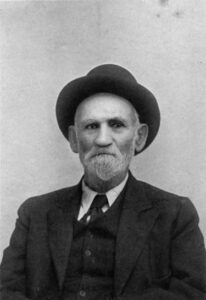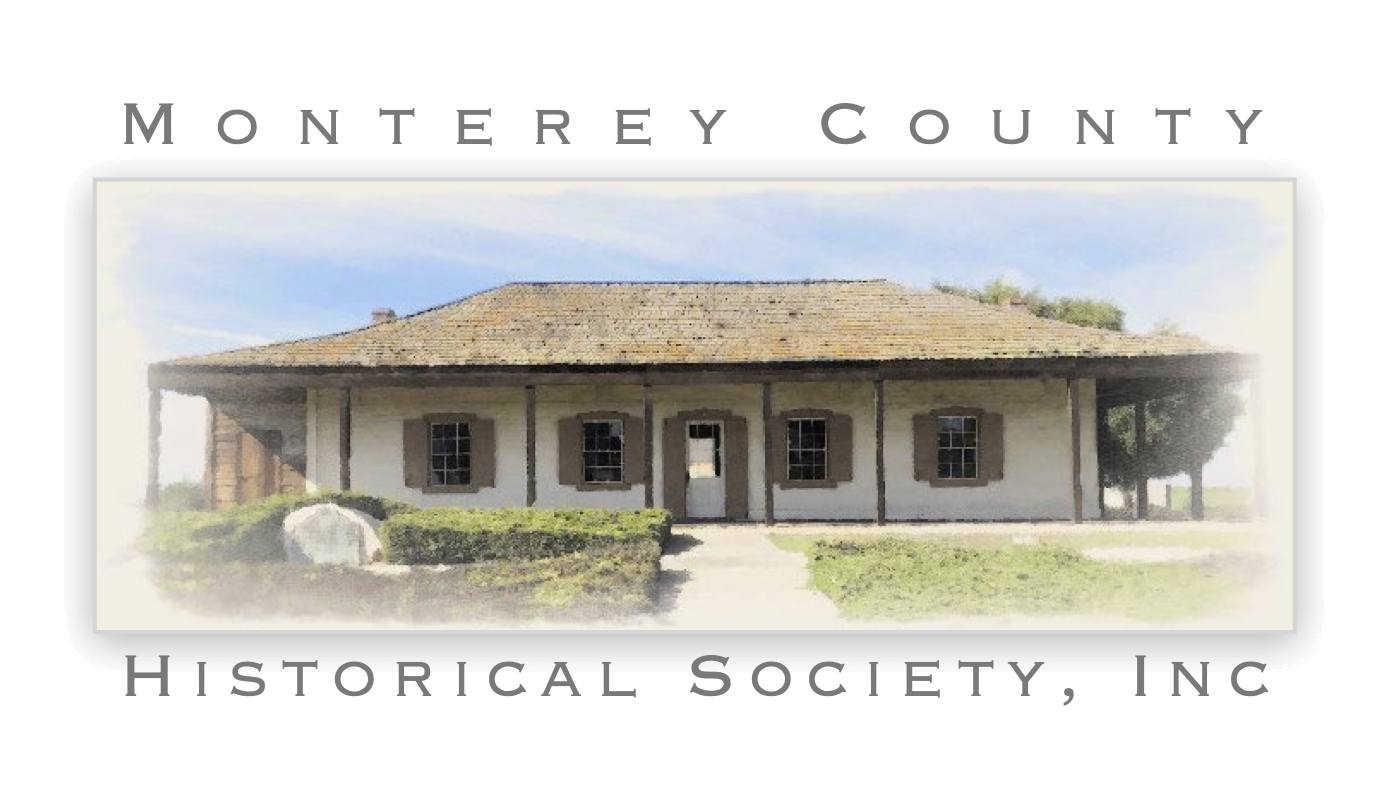
Carlisle S. Abbott was born in eastern Canada. He came to California by way of Wisconsin–the lure of gold brought him. After the Gold Rush he leased a ranch near Sacramento and farmed for a couple of years, then went to Nevada City and started a dairy. Only a few months later a fire destroyed much of the town, so by 1858 he relocated his dairy to Point Reyes in Marin County. In 1865, Abbott drove 500 dairy cattle to the Salinas Valley. He rented about 9,000 acres of land in the area of Rancho Llano de Buena Vista, southeast of Salinas, including the area which would become the town of Spreckels.
In March of 1873, Carlisle Abbott purchased the American Hotel, on the site of Deacon Howe’s Half-Way House, and began work on a three story brick hotel 126 feet wide and 60 feet deep. The American Hotel was moved to the rear, and served as an annex to the new hotel, which was named the Abbott House. Also early in 1873 Jesse D. Carr led in the organization of the Salinas City Bank, the first in the county. It was situated immediately adjacent to the Abbott House. The bank and hotel even had asphalt sidewalks installed! Carr was a power in the State Democratic organization, and was frequently mentioned as a candidate for senate or governor.
Abbott was one of the founders of the Monterey & Salinas Valley Railroad, between Salinas and Monterey. The railroad started out well, but a drought in 1876-1877 ruined the crops, and unseasonable rains the next year ruined them again. Abbott was unable to recover from the financial disaster of his narrow gauge line. He subsequently sold the Abbott House to David Jacks and moved to Arizona. This was a loss for the town, as Abbott had represented Salinas as a member of the California Assembly from 1876-1879. Later in life, after a series of adventures in Arizona and the Southwest, Abbott “retired” to Salinas.
David Jacks was a famous, or infamous, land developer and tycoon who once owned much of Monterey County. During a development boom in 1893, Jacks added 35 rooms on the north end of the building.
In 1919, Carlisle S. Abbott’s old “Abbott House” hotel, by then incorporating the adjacent Salinas City Bank, was sold to George and Mike Cominos. They renovated and enlarged the building, and by 1921 the “Cominos Hotel” was again the premier hotel on the central coast. It boasted the first elevator in the area. Virtually every dignitary who visited Salinas stayed there–Salinas was an important town, and dignitaries including presidents Taft, Hoover and Coolidge stayed at the hotel, as did every governor of California from Alvarado to Pat Brown. Senators and state legislators were frequent visitors, as were other famous people, such as Joe Stillwell. Supreme Court Justice Stephen J. Field is reported to have been a frequent visitor.
The cast-stone and stucco facade, designed by Ralph Wyckoff, dominated Main Street’s 100 block from about 1920. Wyckoff also was the architect for the Cominos Hotel’s interior remodeling.
The Abbott House and later the Cominos Hotel served as the focal point of the town’s social life and entertainment. Wedding receptions, ballroom dances, town meetings, businessmen’s lunches and formal dinners were all held there, and many of the town’s children grew up playing in the halls and the elevator, the first in the entire area. The hotel was the focal point for the town’s night life. As such, it appears in the writings of John Steinbeck.
Mentions of the Abbott House or Cominos Hotel in Steinbeck’s writings (based on a very cursory look):
- East of Eden Chapter 25, section 2
- Chapter 37, section 1
- Chapter 38, section 2
- The Long Valley In the short story “The Chrysanthemums”
- In Dubious Battle
The Abbott House/Cominos Hotel was the gathering spot for the men who made Salinas the county seat, brought the railroad to town, created the California Rodeo and the men who made the Salinas Valley into the “Salad Bowl of the World.” Indeed, this term was coined by one of the Cominos brothers. Their association with this magnificent hotel helped make the Cominos one of the most prominent Greek families in California. The Cominos Hotel was the largest non-agricultural employer in town for many years. Over 30 people lived on the property as staff.
The building gradually declined, and was acquired by the City of Salinas. Years of neglect by the city reduced it to a mere shadow of its former glory and they decided it had to be demolished. Preservation groups led by the Monterey County Historical Society fought back, and in fact won a round in court, but the Loma Prieta earthquake gave the city the excuse it needed. Demolition began just three days later. [Over ten years later the property is still vacant.]
Copyright 2000 by G.S. Breschini
Sources:
- Abbott, Carlisle S., Recollections of a California Pioneer (The Neale Publishing Company, New York, 1917).
- Breschini, Gary S., Trudy Haversat, and Mona Gudgel, 10,000 Years on the Salinas Plain: An Illustrated History of Salinas City, California (Heritage Media, Carlsbad, 2000).


